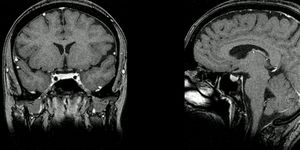Growing A Better Flu Vaccine in Chicken Eggs
Scientists use chicken eggs to grow flu viruses for use in vaccines. However, the flu vaccine is infamous for having questionable effectiveness. Now, scientists know that it’s partially because the flu virus is mutating inside of the chicken eggs. The solution? Stop the mutation.
How effective is the current flu vaccine really? It’s hard to say, but it was estimated to be 42 percent effective during the 2015-2016 flu season. This is due in part to errors in strain selection, which has to occur months in advance, and the flu virus is infamous for continuously evolving. In the present case, the problem is that even when the correct strain is predicted, that strain changes during growth in chicken eggs.
From Duke University, scientists have devised a way to prevent human flu viruses from changing while they are grown in chicken eggs. By doing so, they’ve created a way to produce the seasonal flu vaccine faster, better, and cheaper. Not to mention, they can create a more effective vaccine.
"We have solved a fundamental problem that scientists had accepted would be part of vaccine production - that the virus is always going to mutate if it is grown in eggs," explained senior study author Nicholas S. Heaton, PhD.
How specifically does the virus change as it grows in a chicken egg as opposed to, say, the human nose? To infect cells in the chicken egg instead of in human cells, the virus has to alter a protein called hemagglutinin (HA). During production, HA is incorporated into flu vaccines as a method of activating the immune response. But if the HA in the chicken egg virus is different than the HA in the flu virus that ends up infected people, then the vaccine won’t be effective.
"Because viruses typically mutate during vaccine production, manufacturers have to screen for mutations, and decide which ones can be tolerated and which ones can't," Heaton explained. "If we can eliminate mutations, we can cut back dramatically on production time."
Heaton’s approach is relatively simple. He and his research team created a flu virus expressing both egg HA and human HA, creating a “bivalent” virus as opposed to a “monovalent” virus. They vaccinated mice with both bivalent and monovalent vaccines and saw equal immune responses, so they knew the new bivalent vaccine was just as effective as the regular vaccine.
"We reasoned that the egg-adapted HA would do all the heavy lifting," Heaton explained. "It could do the virus entry work and just bring the other (human) one along for the ride. In effect, that would alleviate the strong selective pressure on the human HA to mutate."
Next they looked at the potential of the bivalent approach to work with even the most troublesome viruses to grow in the lab, and they found success.
"There's a laundry list of problems with the flu vaccine, but this is something that we can solve now, not 10 or 15 years down the line," Heaton said.
The present study was published in the journal mBio.
Source: Duke University









